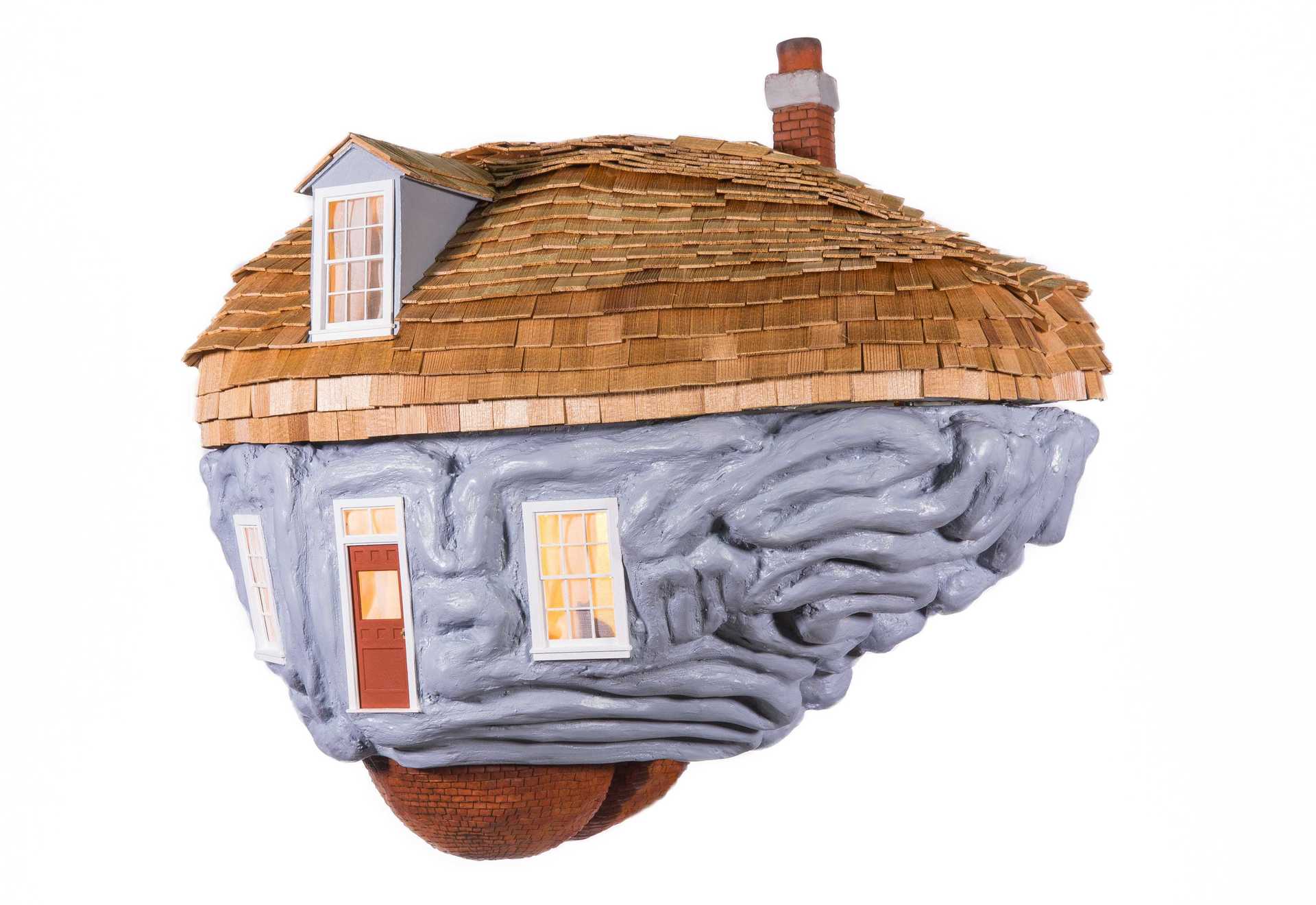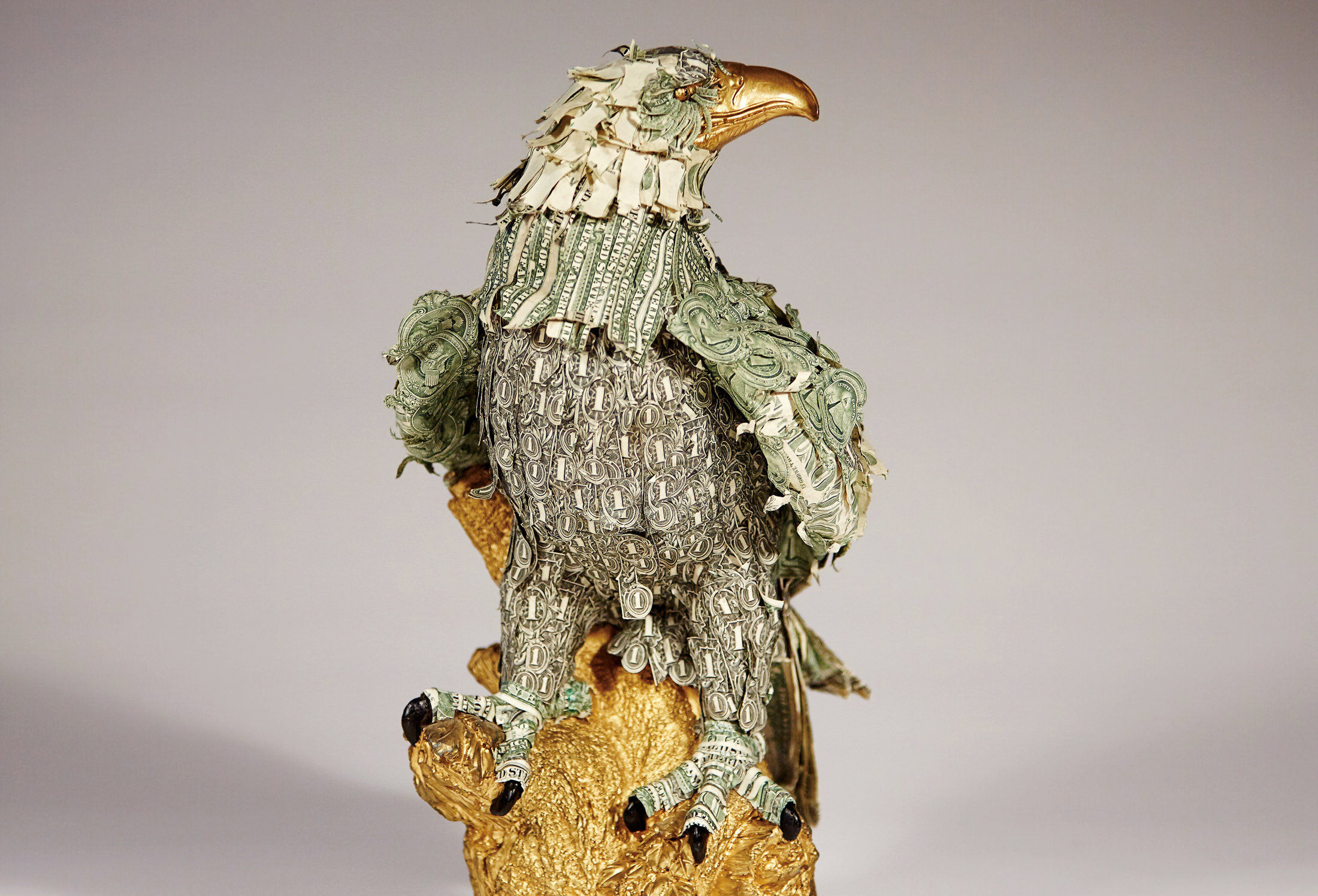Dan Climan Creates Flat Paintings With Psychological Depth
Going places.
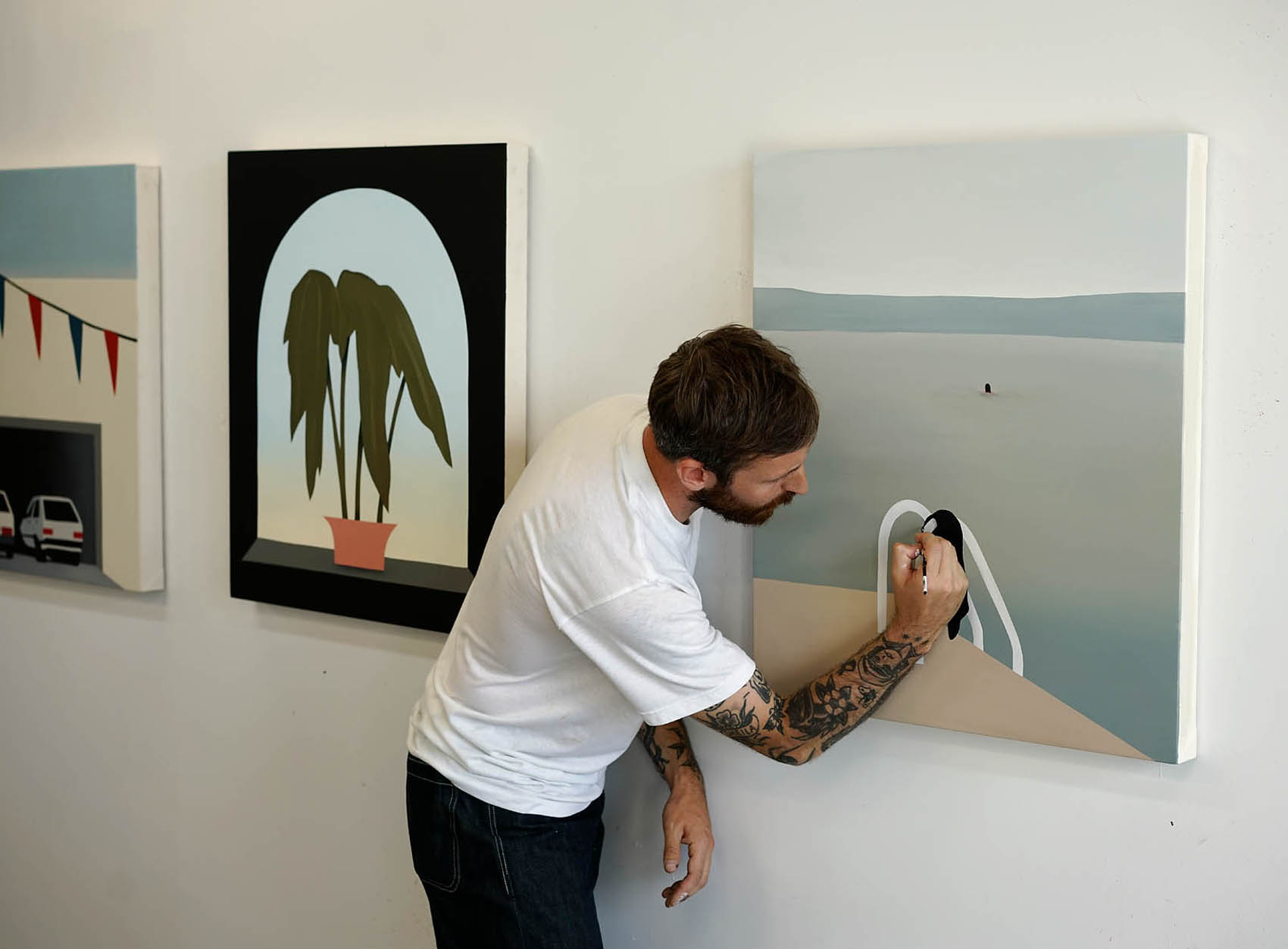
Photo courtesy of Dan Climan.
When he was a kid, Montreal artist Dan Climan spent hours in the backseat of his parents’ car, the window framing fleeting glimpses of life outside: a dog with its tongue hanging out, a woman frowning, a trail of white behind a plane in the sky. In these suspended moments, entire worlds of possibility were contained.
Trained at Vancouver’s Emily Carr University of Art + Design, with a billboard installation and two solo exhibitions in Montreal at Galerie Youn and École de Penseé, and most recently at Toronto’s General Hardware, Climan is a painter whose works are best measured by the journeys he takes to make them. “I walk and run a lot, listening to books or jazz, and I’m always taking photos on my iPhone,” he says. “I also watch a lot of old films. I love Hitchcock movies, like Rear Window, where it kind of looks real, but you can tell it’s a set.” He flips through his mental catalogue of images until he lands on a specific feeling he wants to express, and then a new composition starts to take shape.
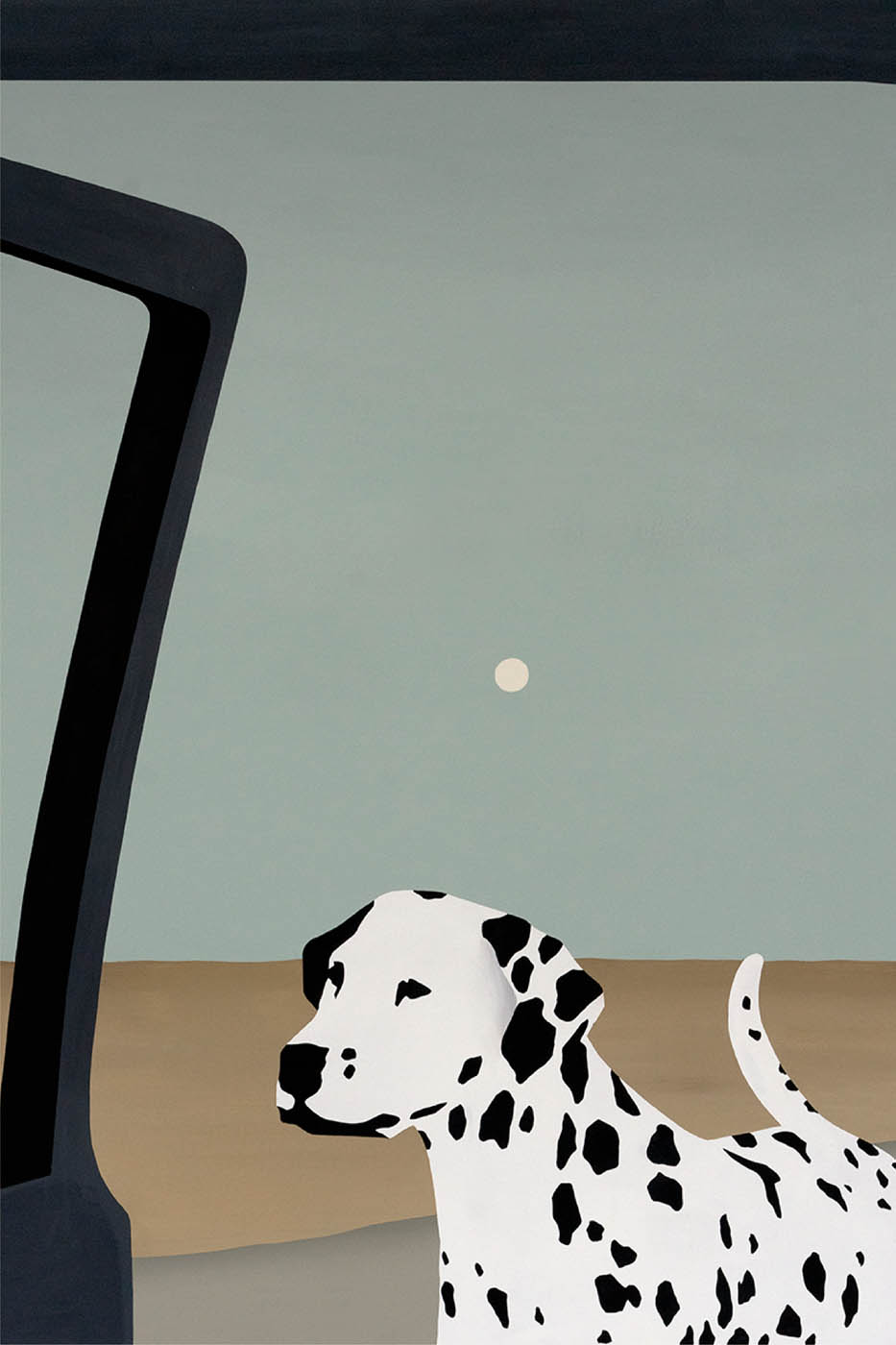
That would be great, 2022. Photo courtesy of Dan Climan.
As a former tattoo artist, he’s learned to painstakingly plan and prepare. He crops and edits while drawing, reducing elements to their essential forms and colours before marking areas destined for flat applications of matte acrylic paint. Down the road, he wants to explore making metal sculptures and painting on a larger scale.
In almost desolate landscapes, faceless figures slink, lone dogs roam, and car doors hang ajar. The economy of detail contributes to a sense of ominous foreboding. Everything is in stasis, on the verge of action. “I don’t want to explain too much,” Climan says. “It’s up to the viewer to decide what’s happening. If I tell you what kind of car it is, or where in the world it is, you can’t relate to it in the same way.”
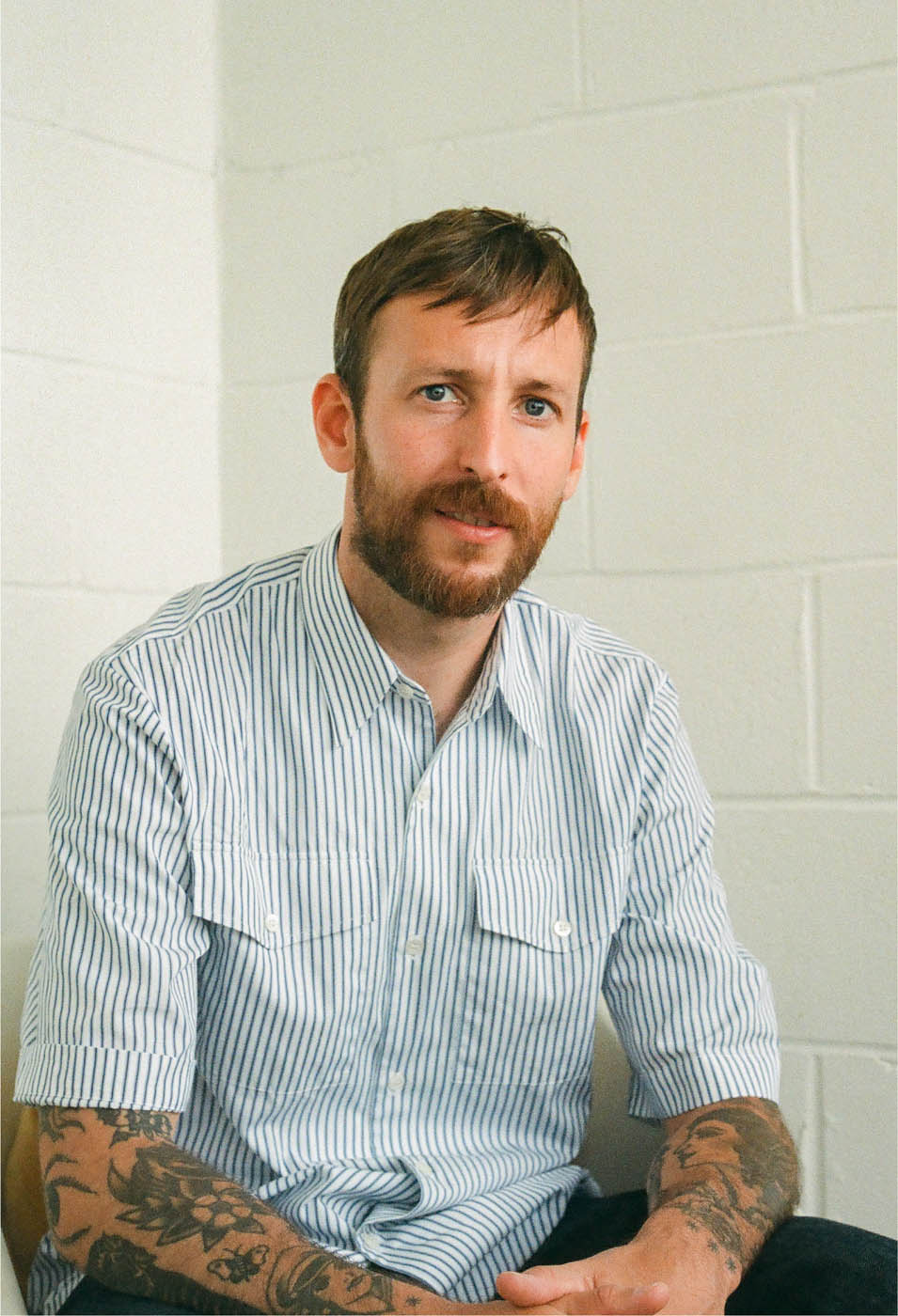
Photo by Hamza Abouelouafaa.
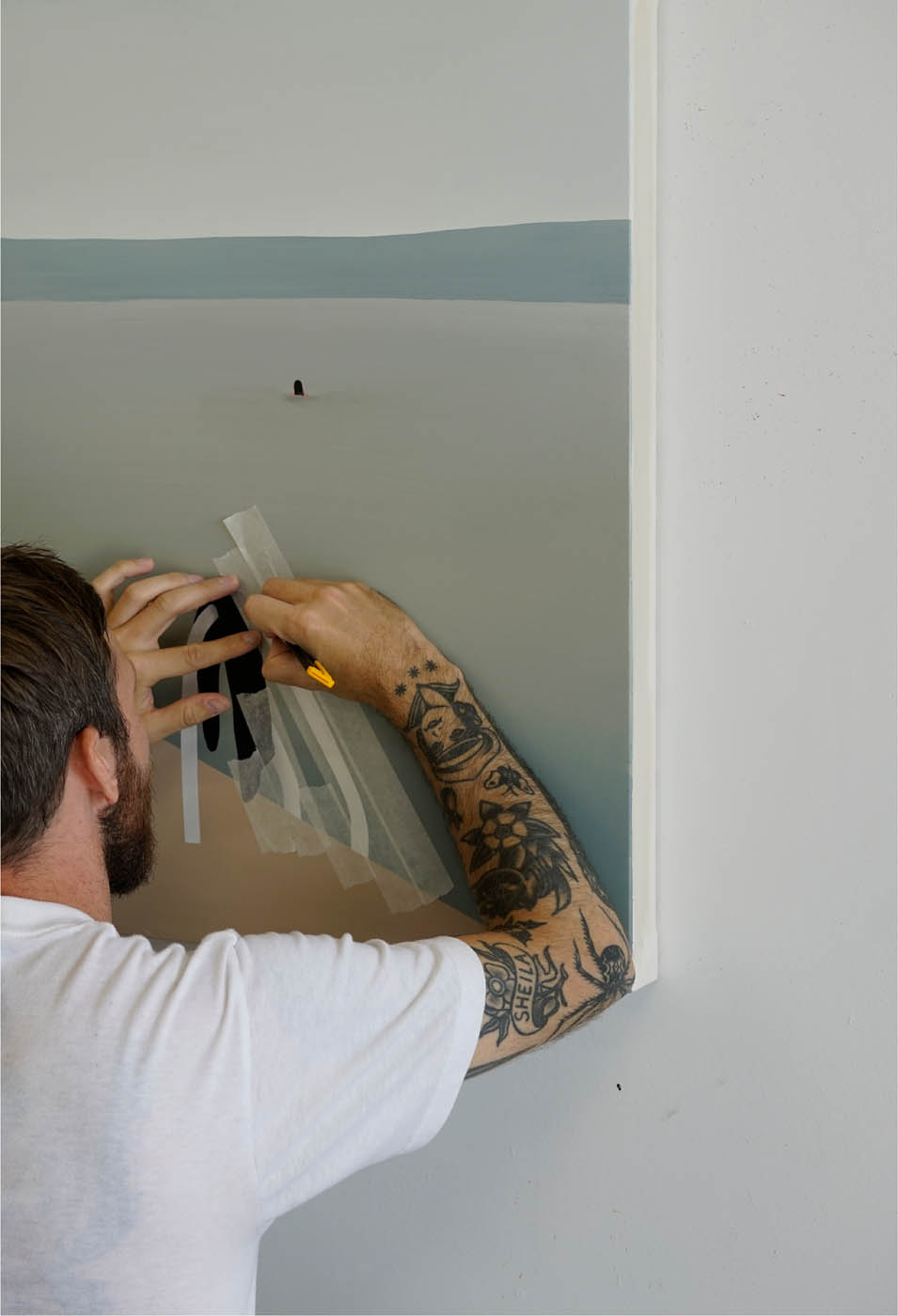
Photo courtesy of Dan Climan.
Life is unpredictable, and Climan’s use of everyday subject matter might be interpreted as his attempt to demand order from chaos. When you move too fast, the identifiers that distinguish landscapes, humans, animals, and machines are stripped away. But if you slow down and look, you might open windows of connection.
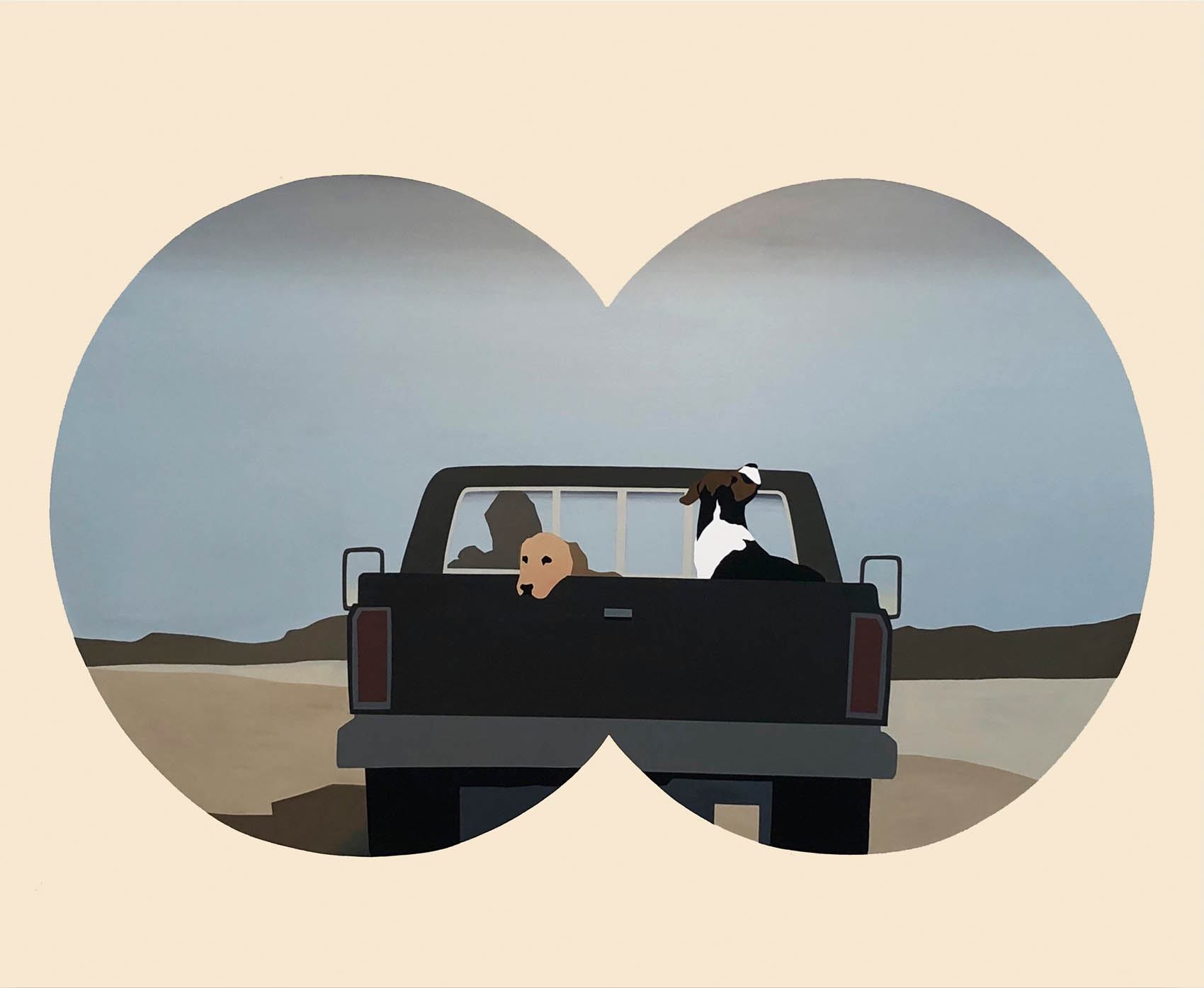
Dogs on the run, 2020. Photo courtesy of Dan Climan.

